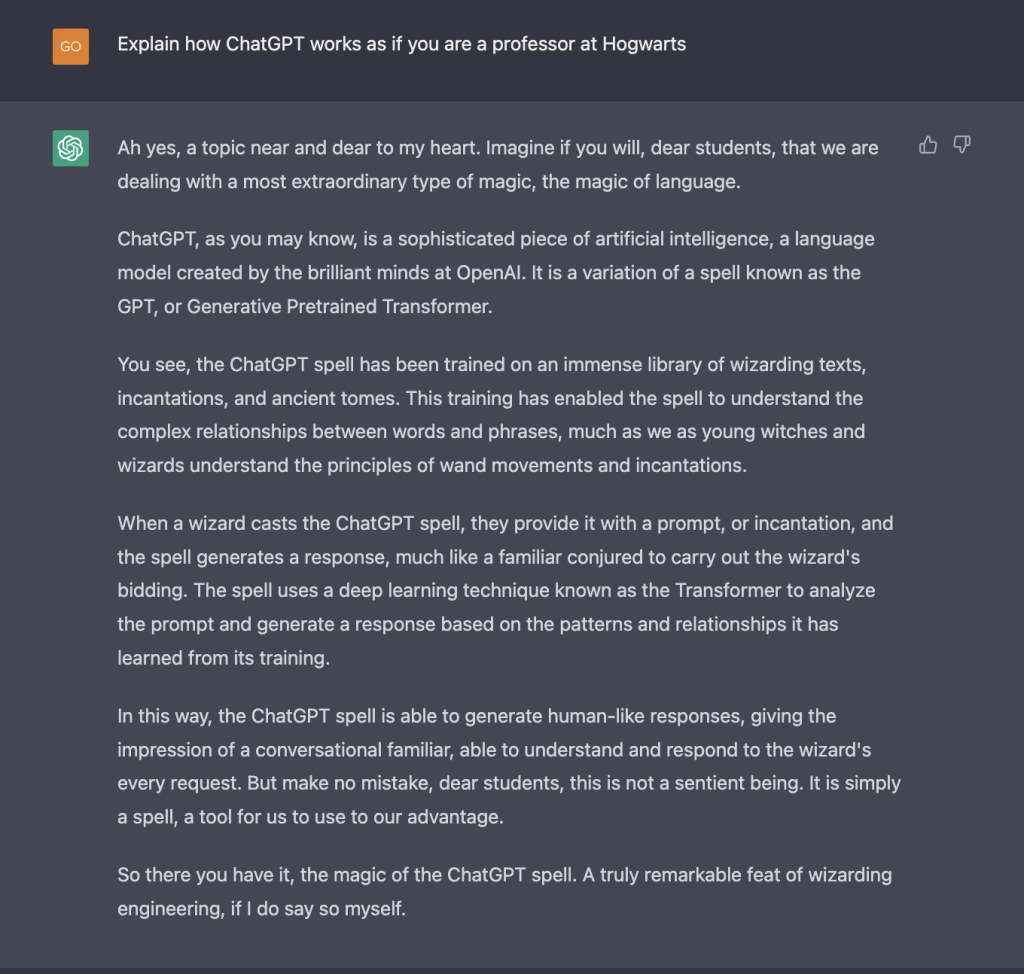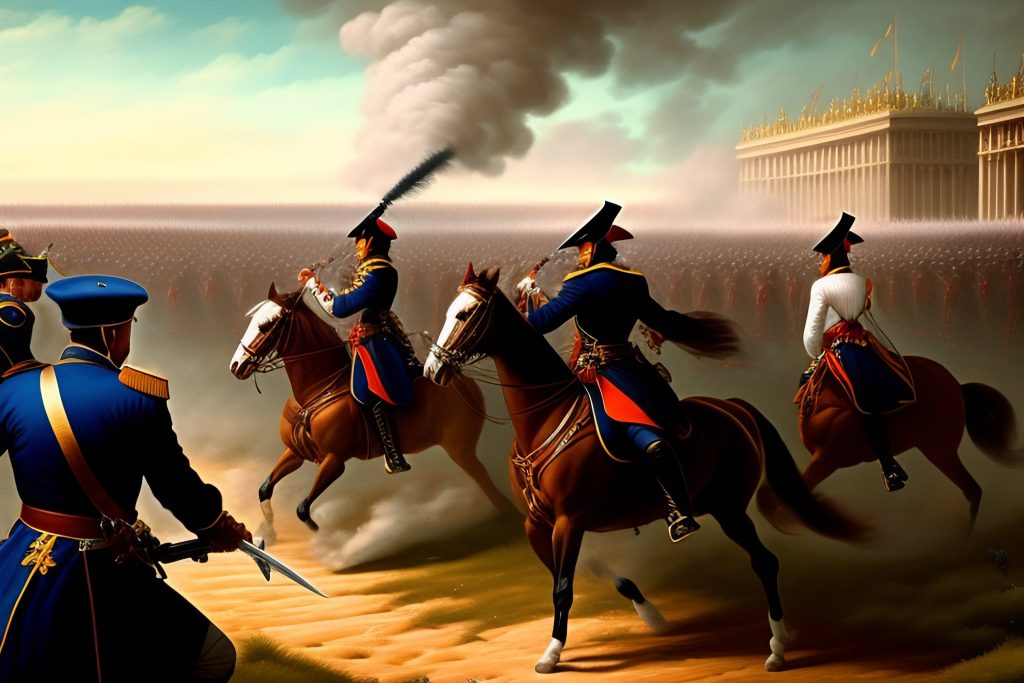
To many of us, it came as a surprise that creative jobs, which are often thought of as immune to automation, are among the first to be disrupted by AI. In recent years, advancements in Generative AI (GAI) have led to the creation of highly sophisticated and realistic works, from digital art to music and writing, of which many were considered to be creative tasks. A digital art painting generated with the help of an AI model was even awarded first place in a fine arts state fair in the US. With the emergence of cutting-edge GAI tools such as Grammarly and ChatGPT, students and academics alike have been embracing it into their toolkits. From enhancing their writing abilities to providing assistance in their research endeavours, the integration of AI has proven to be a valuable asset in streamlining their workflows.
But the impact of these tools on creativity, and critical thinking and the potential for misuse, such as plagiarism, in education are a topic of active controversy. As with the advent of the internet revolution, we once again find ourselves at a crossroads. Do we fear technology or embrace it? This article aims to dispel the common misconceptions surrounding the working principles, outcomes, and applications of these tools and argues the compelling case for how Generative AI will transform human creativity and education for the better.
Is there such a thing as unique snowflakes?
The vastness and the scope of human thought cannot be overstated. The field of cognitive science has repeatedly shown that even the simplest of human behaviours are far more complicated than we could possibly imagine and far superseded by our evolutionary wiring. Contrary to popular belief, the human brain is not a database. Our thoughts are not queried from memory, but rather a result of a continual living experience arising from our interaction with perceived reality and the realm of imagination. Beethoven’s 5th symphony to a computer is just a sequence of binary data. But no two human beings can experience this symphony in the same way. The neural changes that occur in our brains when we listen and react to this symphony or any stimuli are shaped by our individual brain structures, developed over a lifetime of unique experiences. And therefore it is fair to say that the origin of a thought—arising from a combination of individual experiences, perspectives, and thinking patterns—is truly unique. The ability to imagine and contemplate said thoughts are what makes us uniquely human and different from our silicon-based counterparts.
If we were to define creativity as the ability to produce new and original ideas, thoughts, or works often inspired by emotion and intuition—then it is vacuous to assume that human creativity can be replaced by AI. But GAI image generation models like DALL.E and Midjourney create beautiful never before seen original works of art. So should we consider the possibility that creativity is independent of what we define as intelligence? Personally, we don’t think that is the case. Many of the text and image data on the internet curated for these GAI models are posted by humans that are really good at what they do. So it is no surprise that these image models are able to leech off of the creativity of humans and generate mere remixes of pre-existing works that provide a mirage of novelty. As of now, GAI can only be considered creative as long as it has creative texts and images for it to be trained on. It is highly unlikely that we would be impressed by these GAI tools if they were trained on 5th-grade essays and crayon drawings.
Is Generative AI magic?

Large Language Models(LLMs) are the secret magic potions behind recently viral tools like ChatGPT. They are a type of self-supervising AI model that is fed a corpus of text data (training data) carefully curated from the internet. The fundamental idea is that given enough data(usually in the order of terabytes), the model finds relationships and associations between the words and phrases in the text. During the generation of a response, it takes partial words/sentences from the prompt and generates the next word based on the likelihood of the words that come after it in the training data, based on the context. This process is repeated until a complete response is generated. The ability of these tools to answer any prompt with human-sounding language has many of us questioning if it has some sort of intelligence or is conscious. And then when it is asked something related to math or some factual data it outputs something completely absurd and we are relieved. But this is not surprising.
Language is commonly misunderstood as the medium of thought or thinking. We assume that the brain processes the world and our interpretation of it through a progression of words. And this supposed link between language and thinking is a large part of what makes tools such as ChatGPT so eerie. The shortcomings of LLMs point to an important distinction between piecing together words and piecing together ideas—a parallel that can be extended to the human brain. Our biological language networks are not involved in the processing of metaphoric languages like math, music and programming. They are acquired by learning in humans whereas they are merely replicated by LLMs via pattern recognition using sophisticated machine learning models. Impressive feats achieved by ChatGPT such as passing the business and law exams, and intelligently suggesting code completions to programmers are merely an illusion of understanding and not that of rigorous comprehension. LLMs are syntactically (grammatically) remarkable in their response to prompts, but it should not be mistaken as a reflection of semantic understanding. Thinking, intuition and interpretation are uniquely human at least for now. How LLMs’ grammatical excellence translates to Artificial General Intelligence—a popular belief held amongst AI maximalists—is yet to be realised. Personally, we think that it is not AI by itself that replaces human jobs, but rather human workers who wield AI that do. Humans will continue to play a crucial role in what is perceived to be as highly skilled labour for a long time to come.
Empowering “Thought” through AI

Imagine limitless creativity. This is now a reality realised through GAI tools. They have significantly reduced the timeline of realising an idea to execution by a substantial order of magnitude. LLM-based tools can now write code, create websites and applications and deploy them from a mere text command. GAI image generation models can whip up works of art and visualise ideas and thoughts and create numerous variations in mere seconds. Although humans are still largely required to be in the loop for engineering the prompts and interacting with the GAI, mundane everyday tasks both creative and technical can now be automated away. Not everyone is a jack of all trades. A lot of creative tasks require a steep learning curve and was largely inaccessible until now. Everyday creative tasks like posters, cover art for blog posts, infographics, vector art, logo designs, copywriting etc can now be requested instantaneously and affordably at scale—helping us to focus on higher-level thinking and problem-solving instead. This will empower the next generation of writers and artists, and inspire creativity.
In a post-colonial world, proficiency in the English language and precise articulation of thoughts are essential for success in a professional setting. GPT-based tools can help us with creative ruts, enhancing writing, articulation and jumpstart the creative writing process and provide everyone with a personalised writing assistant/copy editor. Writing is not merely a means of articulating established ideas lucidly. It’s a dynamic process that fosters the creation and refinement of thoughts—that represents the epitome of metacognition. Improving one’s writing ability sharpens communication, analytical, critical thinking, and reasoning abilities simultaneously. GAI tools have the potential to empower human thought itself.
Empowering Learning through AI

What if we could converse with textbooks, academic journals, or long-deceased authors? What if we could satisfy the insatiable curiosity and wonder of a child’s ability to question everything into oblivion? This is an exciting new possibility/application of LLM-based tools. These tools can process large amounts of data such as textbooks, and slides coherently and summarise the text and generate insights, leading to faster and more effective research. Teachers can use GAI tools to create and grade unique tailored assignments and interactive experiences freeing up more time to focus on teaching and research. They can also be used to create mock exams, quizzes and flashcards which can greatly help students kickstart the revision and exam prep process. These tools can potentially benefit students with disabilities, such as dyslexia and ADHD, by augmenting learning materials with engaging images, infographics, and customisable AI narrations, allowing them to learn in a manner that caters to their individual needs. The ability of GAI to bring historical events and works of fiction to life, talk and interact with works of art ushers in an exciting new era for education and can greatly inspire learning.
Final words
The remarkable works produced by GAI tools have made us question the place for human creativity. Although beautiful and seemingly novel, it is for better or worse just an illusion. Human curiosity, intuition and passion are still at the ethos of creativity. But GAI has democratised creativity at scale and opens up new frontiers in the human-machine hybrid future that we are headed towards. Now more than ever, GAI tools have shown us that technology can inspire wonder. Despite all the doom and gloom coverage of AI in the media, we give you the reader permission to be excited about AI!


